What are automatic fuses used for?
Automatic fuses (also called circuit breakers) are in fact electrical switches whose main function is to protect a circuit against overload. However, their properties do not end there. In terms of their protective functions, short-circuit protection is also very important. There is a rich and varied range of automatic fuses available on the market which can differ from one another on a number of criteria. These characteristics include: generated short-circuit current, tripping curve, rated current, etc. Below you will learn a little more about the features of automatic fuses as a product category. picture

Principle of automatic fuse operation
Automatic fuses have two basic principles of operation. The first principle relates to structures containing a built-in electromagnet. This electromagnet develops a magnetic force, which increases depending on increased current in the electric circuit. When the magnetic force in question reaches certain limits, chain breakdown conditions occur. On the other hand, the second principle of automatic fuse operation involves the use of a bimetallic strip. In such a mechanism, when the current in the circuit increases, the temperature in the bimetallic strip also increases. Nowadays, the preference is for circuit breakers containing both of the mechanism described. These combined automatic fuses are much more flexible in terms of meeting user requirements and the characteristics of the electrical circuit. picture
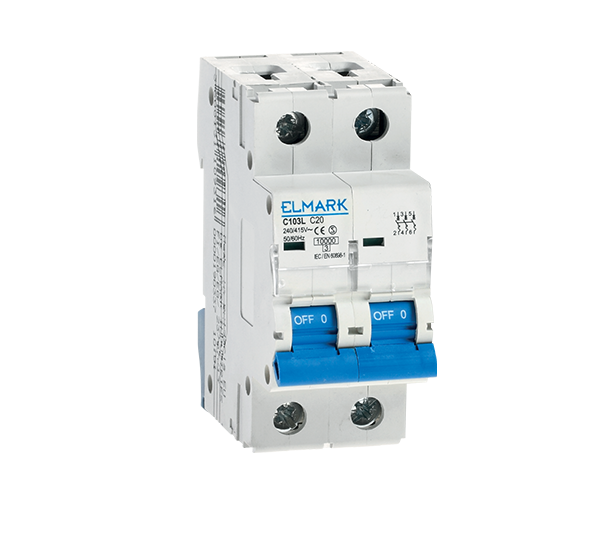
Design and components of automatic fuses
As already mentioned, most the automatic fuses today contain both an electromagnet and a bimetallic strip. What other elements, however, are included in their design? In following few lines you will learn the most important of these components.
- lever (handle) — we begin with the handle, the main purpose of which is to perform automatic fuse manual switching and resetting. It also indicates the current state of the breaker at all times (i.e. whether it is switched on or off). picture
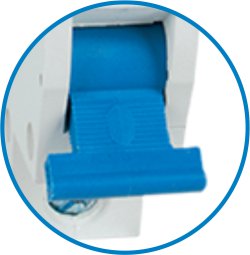
- switching mechanism — it actuates the contacts of the automatic fuse. Depending on the type and model of the particular circuit breaker, the contacts in question may be moved all together or separately. picture

- other components — other components are also available in the design of automatic fuses which play an important role in their proper functioning. These include, for example, bimetallic strip, magnetic core, arc chamber, etc. picture

Automatic fuses — types and classification criteria
As already mentioned, there are a number of criteria according to which automatic fuses can be classified into types and groups. Each of the criteria meets certain user needs and requirements, as well as the characteristics of the respective circuit. Let us look at these criteria one by one:
- nominal current values — the choice of an automatic fuse is made by the designers based on calculations of the electrical modes of the installation and the fulfilment of certain requirements. Typical rated current values according to the automatic fuse are: 1; 2; 4; 6; 10; 16; 20; 25; 32; 40; 50; 63 А. The choice may also be based on the cross section of the rated current cable: In = 6 A, C curve — for conductor min 1 mm2; In = 10 A, C curve — for conductor min 1.5 mm2; In = 16 A, C curve — for conductor min 2.5 mm2; In = 25 A, C curve — for conductor min 4 mm2. pictur.

- generated short-circuit current (maximum tripping) — this is one of the most important criteria when choosing a specific category of automatic fuse. This indicator shows how much current the automatic fuse can bear without breaking. The unit used to measure the short-circuit current is ampere (A) or kiloampere (kA). In Bulgaria automatic fuses generating short-circuit current 6,000 A (6 kA) are mostly preferred. In addition, other types of automatic fuses are available from ElectroMarket online shop. The automatic fuse you select could also generate a 4,500 A (4.5 kA) or 10,000 A (10 kA) short-circuit current. The lower values (4.5 and 6 kA) relate to automatic fuses for household use, and higher (10 kA and up) — for industrial use circuit breakers. picture

- tripping curve — what is the tripping curve? It is a time-current characteristic representing multiples of the rated current which the automatic fuse can trip and the trigger time of the circuit breaker. ElectroMarket offers automatic fuses with B, C and D tripping curves. The standard household choices are automatic fuses with C tripping curve. They ensure fast triggering of the circuit breaker, in order to effectively protect the electrical circuit in the house or apartment. Automatic fuses with the other two tripping curves are used in more specific situations and facilities. The application of those with the B tripping curve is mainly related to the protection of longer lines (for example, at transformer stations). On the other hand, automatic fuses with D tripping curve are designed for industrial consumers with a higher starting current. picture
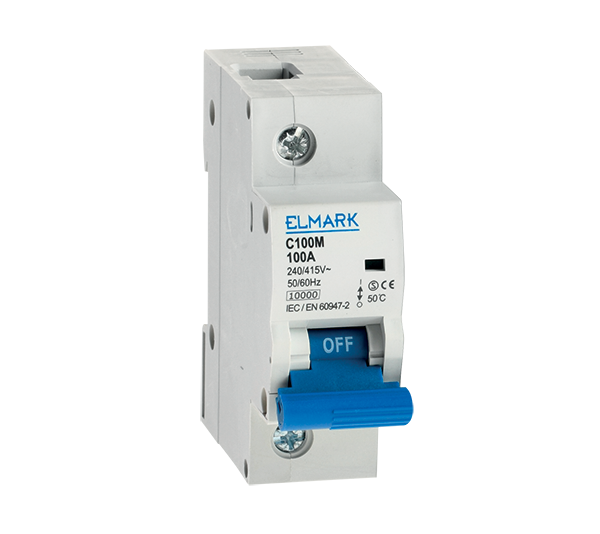
- number of poles — in terms of rated voltage characteristic, the automatic fuses typically operate at phase voltage 220–240 VAC and 380–400 VAC. This determines the number of poles of each circuit breaker. They can be 1P, 2P for a phase voltage of 220–240 VAC, 3P and 4P at 380–400 VAC. picture

- Installation — the automatic fuses are mounted on a specially designed DIN busbar. By their very nature, DIN busbars represent solid or perforated switchboard busbars. They usually serve for the affixation of different equipment, including automatic fuses. Depending on the material from which they are made, DIN busbars can be metal, plastic or aluminium. picture

In addition to the types mentioned, ElectroMarket offers more items in the Automatic Fuses category. Our special offers include, for example, an automatic fuse which trips the phase and the zero conductors simultaneously, in order to offer better protection for the electrical system as a whole. The DC series of automatic fuses is designed to protect DC consumers. The products in this series are mainly used in the field of industry, in various workshops and production premises. ElectroMarket can also deliver other types of automatic fuses to meet your individual needs and the characteristics of the electrical circuits in your premises.
Automatic fuses — optional accessories – допълнителни аксесоари
There is an option to purchase a range of accessories for automatic fuses. They will offer additional features to the aforementioned ones of the automatic fuses. In the next lines you will learn more about some of the fuse accessories available from ElectroMarket's online shop.
- combined voltage breaker — most often connected to the main breaker, but can also be mounted to a certain current circuit that requires protection. The function of this device is to monitor voltage and to trip the circuit breaker at low voltage below 170 VAC or at high voltage above 270 VAC. This way, we can successfully protect our electrical appliances from supplying low or high voltage to the switchboard. picture
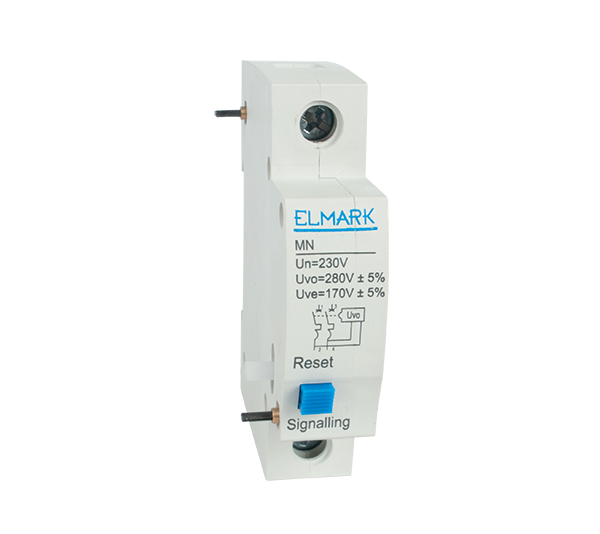
- remote stop — the functions of this auto fuse accessory are suggested by its name. The remote stop provides remote breaking when the voltage is applied. In this way you can take precautions at any point in which you think there may be danger or risk to the circuit. picture

- auxiliary contacts — auxiliary contacts are a commonly used accessory for automatic fuses. They are normally used for signalling purposes. When the automatic fuse is triggered, the respective auxiliary contact is activated by sending a signal to the control or signalling system. picture

- blocking device for an automatic fuse — the blocking device is used in more specific situations for the purposes of additional protection for both the automatic fuses and the electrical system and its components. It is installed right next to the lever of the automatic fuse, thus preventing it from being switched on and off. picture

Useful tips and practices about automatic fuses
We continue with some useful tips and practical advice in the use of automatic fuses. These tips and practical advice will help you to make the best choice of automatic fuses and be aware of the appropriate moments for their replacement. Here is what you need to know:
- Choice of automatic fuse — when selecting automatic fuses, you must be especially careful about the rated current values referred to above. This choice must be based on calculations of the electrical modes of the installation or its requirements. In other words, you need to determine exactly what nominal current is required for the installation and look for the most suitable automatic fuse. picture
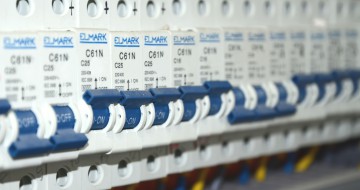
- automatic fuse replacement — replacement is made when the corresponding fuse is worn out over time and is no longer working properly. There are several signs that may suggest such a problem. These include heating of the automatic fuse, burning smell, frequent falling or a strange noise when working. If any of these signs are present, you will most likely have to change the automatic fuse very soon. picture
What are automatic fuses used for?
Principle of automatic fuse operation
Design and components of automatic fuses
Automatic fuses — types and classification criteria
-
To the product
 MCB DC62 6A 2P 6KA 500V CURVE C FOR PV SYSTEMS 41264
MCB DC62 6A 2P 6KA 500V CURVE C FOR PV SYSTEMS 41264Rated voltage 500 V Rated current 6 A Breaking capacity 6 kA Number of poles 2 Warranty 
-
-
To the product
 MCB DC62 10A 2P 6KA 500V CURVE C FOR PV SYSTEMS 41265
MCB DC62 10A 2P 6KA 500V CURVE C FOR PV SYSTEMS 41265Rated voltage 500 V Rated current 10 A Breaking capacity 6 kA Number of poles 2 Warranty 
-
-
To the product
 MCB DC62 13A 2P 6KA 500V CURVE C FOR PV SYSTEMS 41266
MCB DC62 13A 2P 6KA 500V CURVE C FOR PV SYSTEMS 41266Rated voltage 500 V Rated current 13 A Breaking capacity 6 kA Number of poles 2 Warranty 
-
-
To the product
 MINIATURE CIRCUIT BREAKER 64N/2A 4P CURVE C 41402N
MINIATURE CIRCUIT BREAKER 64N/2A 4P CURVE C 41402N-
Brand

Rated voltage 400 V Rated current 2 A Breaking capacity 6 kA Number of poles 4 Warranty 
-
Brand
-
To the product
 MCB DC62 16A 2P 6KA 500V CURVE C FOR PV SYSTEMS 41267
MCB DC62 16A 2P 6KA 500V CURVE C FOR PV SYSTEMS 41267Rated voltage 500 V Rated current 16 A Breaking capacity 6 kA Number of poles 2 Warranty 
-
-
To the product
 MINIATURE CIRCUIT BREAKER 64N/4A 4P CURVE C 41404N
MINIATURE CIRCUIT BREAKER 64N/4A 4P CURVE C 41404N-
Brand

Rated voltage 400 V Rated current 4 A Breaking capacity 6 kA Number of poles 4 Warranty 
-
Brand
-
To the product
 MCB DC62 20A 2P 6KA 500V CURVE C FOR PV SYSTEMS 41268
MCB DC62 20A 2P 6KA 500V CURVE C FOR PV SYSTEMS 41268Rated voltage 500 V Rated current 20 A Breaking capacity 6 kA Number of poles 2 Warranty 
-
-
To the product
 MINIATURE CIRCUIT BREAKER 64N/6A 4P CURVE C 41406N
MINIATURE CIRCUIT BREAKER 64N/6A 4P CURVE C 41406N-
Brand

Rated voltage 400 V Rated current 6 A Breaking capacity 6 kA Number of poles 4 Warranty 
-
Brand
-
To the product
 MCB DC62 25A 2P 6KA 500V CURVE C FOR PV SYSTEMS 41269
MCB DC62 25A 2P 6KA 500V CURVE C FOR PV SYSTEMS 41269Rated voltage 500 V Rated current 25 A Breaking capacity 6 kA Number of poles 2 Warranty 
-
-
To the product
 MCB DC62 32A 2P 6KA 500V CURVE C FOR PV SYSTEMS 41270
MCB DC62 32A 2P 6KA 500V CURVE C FOR PV SYSTEMS 41270Rated voltage 500 V Rated current 32 A Breaking capacity 6 kA Number of poles 2 Warranty 
-
-
To the product
 MCB DC62 40A 2P 6KA 500V CURVE C FOR PV SYSTEMS 41271
MCB DC62 40A 2P 6KA 500V CURVE C FOR PV SYSTEMS 41271Rated voltage 500 V Rated current 40 A Breaking capacity 6 kA Number of poles 2 Warranty 
-
-
To the product
 MCB DC62 50A 2P 6KA 500V CURVE C FOR PV SYSTEMS 41272
MCB DC62 50A 2P 6KA 500V CURVE C FOR PV SYSTEMS 41272Rated voltage 500 V Rated current 50 A Breaking capacity 6 kA Number of poles 2 Warranty 
-
-
To the product
 MCB DC62 63A 2P 6KA 500V CURVE C FOR PV SYSTEMS 41273
MCB DC62 63A 2P 6KA 500V CURVE C FOR PV SYSTEMS 41273Rated voltage 500 V Rated current 63 A Breaking capacity 6 kA Number of poles 2 Warranty 
-
-
To the product
 MCB DC64 6A 4P 6KA 1000V CURVE C FOR PV SYSTEMS 41564
MCB DC64 6A 4P 6KA 1000V CURVE C FOR PV SYSTEMS 41564Rated voltage 1000 V Rated current 6 A Breaking capacity 6 kA Number of poles 4 Warranty 
-
-
To the product
 MCB DC64 10A 4P 6KA 1000V CURVE C FOR PV SYSTEMS 41565
MCB DC64 10A 4P 6KA 1000V CURVE C FOR PV SYSTEMS 41565Rated voltage 1000 V Rated current 10 A Breaking capacity 6 kA Number of poles 4 Warranty 
-
-
To the product
 MINIATURE CIRCUIT BREAKER 64N/50A 4P CURVE C 41450N
MINIATURE CIRCUIT BREAKER 64N/50A 4P CURVE C 41450N-
Brand

Rated voltage 400 V Rated current 50 A Breaking capacity 6 kA Number of poles 4 Warranty 
-
Brand
-
To the product
 MCB DC64 13A 4P 6KA 1000V CURVE C FOR PV SYSTEMS 41566
MCB DC64 13A 4P 6KA 1000V CURVE C FOR PV SYSTEMS 41566Rated voltage 1000 V Rated current 13 A Breaking capacity 6 kA Number of poles 4 Warranty 
-
-
To the product
 MCB DC64 16A 4P 6KA 1000V CURVE C FOR PV SYSTEMS 41567
MCB DC64 16A 4P 6KA 1000V CURVE C FOR PV SYSTEMS 41567Rated voltage 1000 V Rated current 16 A Breaking capacity 6 kA Number of poles 4 Warranty 
-
-
To the product
 MINIATURE CIRCUIT BREAKER C104L/6A 4P CURVE C 41401
MINIATURE CIRCUIT BREAKER C104L/6A 4P CURVE C 41401-
Brand

Rated voltage 230 V Rated current 6 A Breaking capacity 10 kA Number of poles 4 Warranty 
-
Brand
-
To the product
 MCB DC64 20A 4P 6KA 1000V CURVE C FOR PV SYSTEMS 41568
MCB DC64 20A 4P 6KA 1000V CURVE C FOR PV SYSTEMS 41568Rated voltage 1000 V Rated current 20 A Breaking capacity 6 kA Number of poles 4 Warranty 
-
Prices are VAT inclusive





